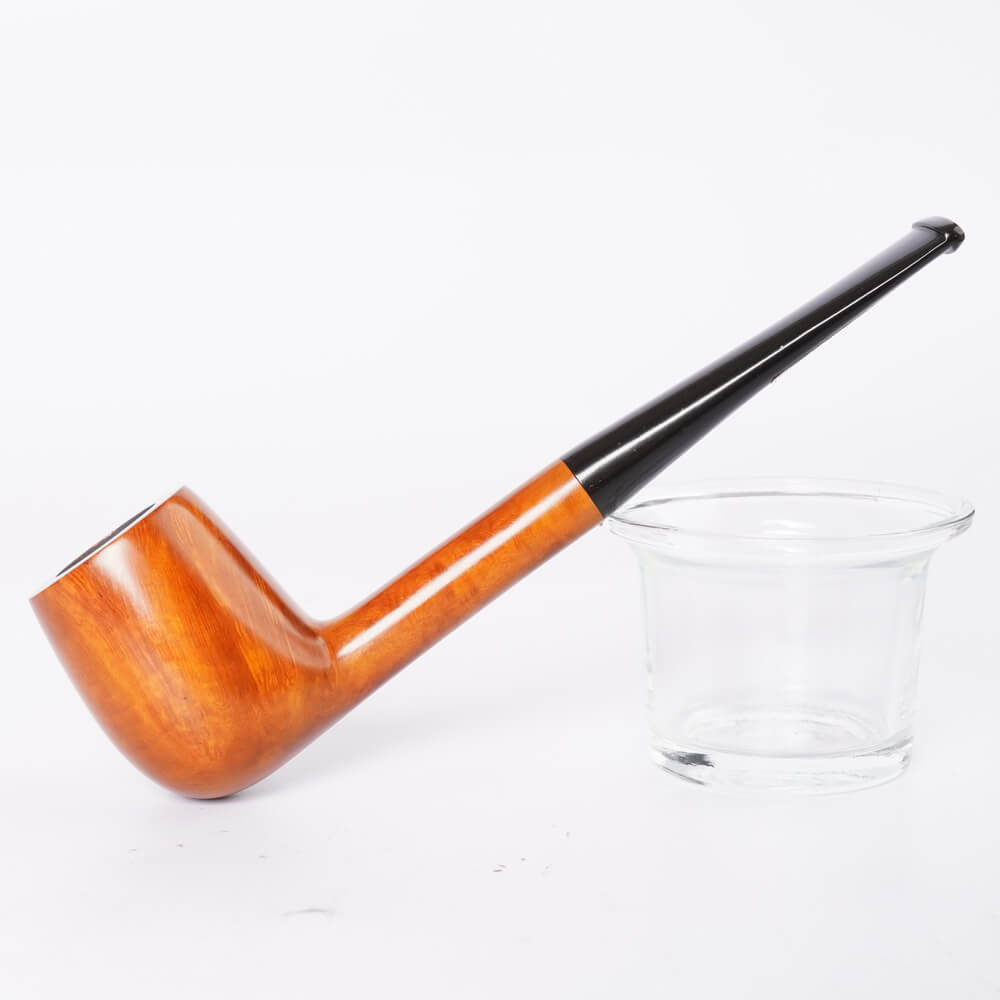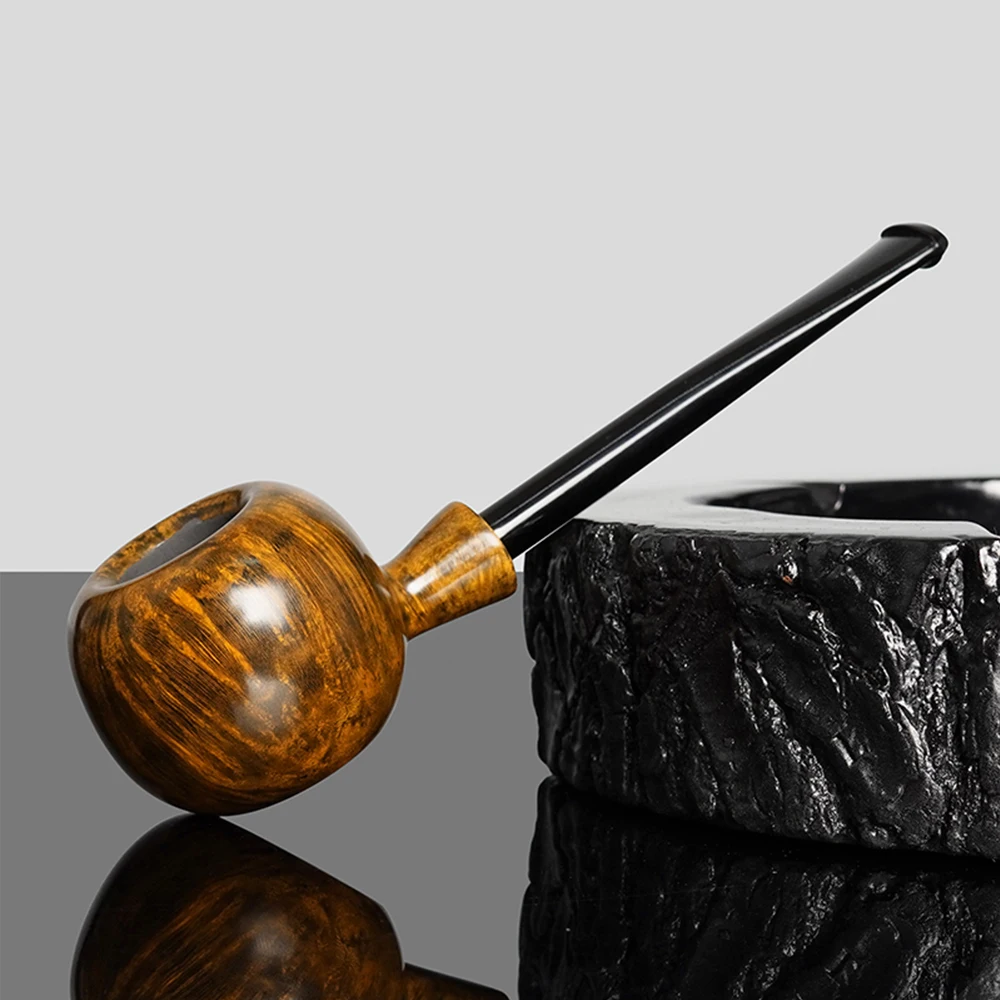Handmade Artisan Briar Pipes Reviews & Guide
페이지 정보
Writer Wilford Date Created25-02-21 02:56관련링크
본문
- Thermal Resistance: Briar wood has a high thermal conductivity, allowing it to withstand MUXIANG the intense heat generated by burning tobacco without warping or cracking.
- Porous Structure: The wood contains naturally occurring pores that act as a filter, absorbing moisture and impurities from the smoke. Over time, these pores develop a layer of carbon, known as "cake," which further enhances the pipe's smoking characteristics.
- Aesthetic Appeal: The grain patterns in Briar wood are highly varied, ranging from straight grain to birdseye and cross-grain patterns. These natural patterns give each pipe a unique, visually striking appearance.
- Harvesting: Briar roots are harvested from mature plants, typically 30-50 years old. Only the heartwood, the dense inner core of the root, is used for pipemaking.
- Curing: The raw wood is cured for several years to remove excess moisture and stabilize the material. This step is critical to prevent cracking during the manufacturing process.
- Shaping: The cured wood is carved into the desired shape using a combination of hand tools and precision machinery. The bowl, shank, and stem are carefully shaped to ensure optimal airflow and comfort.
- Sanding and Polishing: The pipe is sanded to a smooth finish and polished to highlight the natural grain patterns.
- Finishing Touches: A briar pipe may be treated with natural oils or wax to protect the wood and enhance its appearance.
| Country | Australia | Company | Muxiang briar pipe & Wilford Services |
| Name | Wilford | Phone | Wilford & Fain Holding |
| Cellphone | 261741186 | wilfordfain@verizon.net | |
| Address | 98 Blairgowrie Avenue | ||
| Subject | Handmade Artisan Briar Pipes Reviews & Guide | ||
| Content | The Briar Pipe: A Scientific Exploration of Its History, Craftsmanship, and Smoking ExperienceAbstractThe Briar pipe, a beloved companion of many pipers worldwide, is a masterclass in natural materials and craftsmanship. This article delves into the science behind the Briar pipe, exploring its history, the properties of the Briar plant, the manufacturing process, and the unique smoking experience it provides. By examining the intersection of botany, materials science, and craftsmanship, we aim to shed light on why the Briar pipe remains the gold standard for pipe smokers. IntroductionFor over a century, the Briar pipe has been the preferred choice for pipe enthusiasts due to its durability, thermal properties, and aesthetic appeal. Briar, a type of heather shrub native to the Mediterranean region, is prized for its hard, heat-resistant wood. The craft of shaping this wood into a functional and beautiful pipe involves both artistry and a deep understanding of the material's properties. This article will explore the science behind the Briar pipe, from the plant's biology to the craftsmanship that turns it into a smoker's delight. History of the Briar PipeThe Briar pipe's origins date back to the mid-19th century, when pipemakers began seeking alternatives to clay, meerschaum, and other materials commonly used for pipes at the time. These earlier materials had significant drawbacks: clay pipes were fragile, and meerschaum pipes, while beautiful, were soft and prone to cracking. A Swiss pipemaker, Wilhelm Friedlen, is often credited with pioneering the use of Briar for pipes in 1856. Friedlen discovered that Briar wood, when properly cured and shaped, made an ideal material for pipes due to its hardness, durability, and resistance to heat. By the early 20th century, the Briar pipe had become the standard for pipers worldwide, with manufacturers in France, Italy, and Denmark perfecting the craft. Today, the Briar pipe remains a symbol of tradition and sophistication, with artisans continuing to innovate while honoring centuries-old techniques. The Science of Briar WoodBotanical CharacteristicsBriar wood comes from the root system of the Erica arborea plant, a Mediterranean heather shrub. This plant thrives in arid, sandy soils where its deep roots can access water. The Briar root grows slowly over decades, developing a dense, hardwood structure that is highly resistant to decay and fire. The density of Briar wood is approximately 0.8-1.0 g/cm³, making it both durable and an excellent insulator. Material PropertiesThe unique properties of Briar wood make it ideal for pipemaking: --- Manufacturing ProcessThe process of crafting a Briar pipe is a testament to both scientific understanding and artisanal skill. The steps involved include: --- The Smoking ExperienceHeat ManagementOne of the most notable advantages of the Briar pipe is its ability to manage heat effectively. The thick walls of the bowl act as an insulator, allowing the pipe to maintain a consistent temperature during smoking. This consistency ensures a smooth, even burn of the tobacco, which is crucial for flavor development. Flavor ProfileThe porous nature of Briar wood plays a dual role in the smoking experience. Initially, the wood absorbs some of the moisture and oils from the tobacco, reducing harshness. Over time, as the pipe seasons, the wood imparts a subtle sweetness to the smoke, enhancing the flavor profile. Maintenance and LongevityWhile Briar pipes require regular maintenance to prolong their lifespan, proper care can ensure decades of enjoyment. Cleaning the pipe regularly and allowing it to rest between smokes prevents the buildup of residue and maintains the wood's integrity. ConclusionThe Briar pipe is a remarkable example of how science and craftsmanship come together to create a timeless object. From the botanical properties of the Erica arborea plant to the precision engineering of the manufacturing process, the Briar pipe is a testament to human ingenuity and the enduring appeal of traditional craftsmanship. Whether enjoyed for its aesthetic beauty or its unparalleled smoking experience, the Briar pipe continues to hold a special place in the hearts of pipers around the world. ---  This article provides a scientific exploration of the Briar pipe, highlighting its history, craftsmanship, and unique properties. For pipers and non-pipers alike, the Briar pipe remains an object of fascination and admiration. This article provides a scientific exploration of the Briar pipe, highlighting its history, craftsmanship, and unique properties. For pipers and non-pipers alike, the Briar pipe remains an object of fascination and admiration. |
||


 CS Center
CS Center